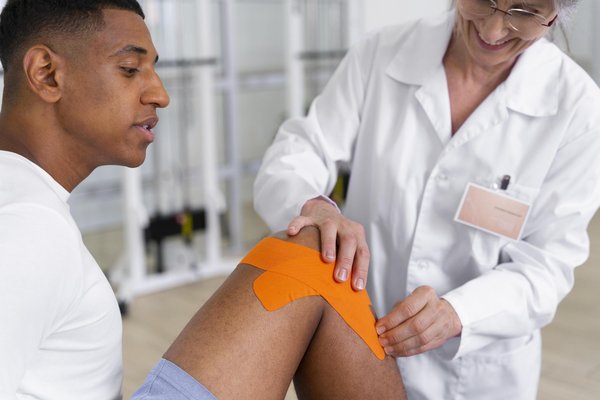
Optimizing fitness recovery is just as crucial as the workout itself for achieving peak physical condition and preventing injuries. It’s the vital period where your body repairs muscle tissue, replenishes energy stores, and adapts to the stresses of training. Neglecting recovery can lead to plateaus, fatigue, and increased risk of sidelining injuries, undermining all your hard work in the gym.
Why Fitness Recovery Matters
Exercise, particularly intense workouts, causes microscopic tears in muscle fibers. This is a natural process that, with proper recovery, leads to muscle growth and strength. During recovery, the body initiates complex processes to repair these tears, remove metabolic waste products like lactic acid, and restore physiological balance. Adequate rest allows the nervous system to recover, preventing burnout and maintaining motivation.
Moreover, recovery is essential for replenishing glycogen stores in muscles and the liver, which are depleted during sustained physical activity. Without sufficient refueling, subsequent workouts will be less effective and feel significantly harder. The cumulative effect of poor recovery can lead to chronic fatigue, decreased performance, hormonal imbalances, and a compromised immune system – collectively known as overtraining syndrome.
Key Pillars of Effective Fitness Recovery
Sleep: The Foundation of Repair
Sleep is arguably the most critical component of recovery. During deep sleep stages, the body releases growth hormone, which is vital for tissue repair and muscle growth. Sleep also helps regulate cortisol (a stress hormone) levels and supports immune function. Aim for 7-9 hours of quality sleep per night, especially after intense training days. Establishing a consistent sleep schedule and creating a restful environment are key strategies for maximizing sleep's restorative benefits.
Nutrition: Fueling the Recovery Process
What you eat post-workout significantly impacts how quickly and effectively your body recovers. Consuming a combination of protein and carbohydrates within a reasonable timeframe after exercise is crucial. Protein provides the building blocks (amino acids) needed for muscle repair and synthesis. Carbohydrates help replenish depleted glycogen stores. Aim for a ratio of roughly 3:1 or 4:1 carbohydrates to protein, depending on the intensity and duration of your workout.
Hydration is equally important. Sweat loss during exercise depletes fluids and electrolytes. Rehydrating adequately with water and electrolyte-rich fluids helps restore cellular function and nutrient transport. Don't wait until you're thirsty; sip water throughout the day.
Incorporating anti-inflammatory foods like berries, leafy greens, fatty fish (rich in omega-3s), nuts, and seeds can also aid recovery by reducing inflammation and oxidative stress caused by exercise.
Active Recovery: Keeping the Body Moving Gently
Rest doesn't always mean complete stillness. Active recovery involves low-intensity exercise that increases blood flow without putting significant stress on the muscles. Activities like walking, light cycling, swimming, or yoga can help reduce muscle soreness, improve flexibility, and promote circulation, aiding in the removal of waste products.
Stretching and Mobility Work: Restoring Range of Motion
Regular stretching, both static (holding a stretch) and dynamic (moving through a range of motion), can improve flexibility and mobility. This helps maintain healthy joint function and can alleviate muscle tightness that often follows intense exercise. Foam rolling or using massage balls are forms of self-myofascial release that can help break up adhesions in muscle tissue, improving blood flow and reducing soreness. Incorporate these into your cool-down routine or on rest days.
Heat and Cold Therapies: Soothing Sore Muscles
Different temperature therapies can offer recovery benefits. Cold therapy, such as ice baths or cold showers, can help reduce inflammation and numb soreness. Heat therapy, like warm baths or saunas, can increase blood flow and promote relaxation. The effectiveness and ideal timing of these methods can vary depending on the individual and the type of activity, but many athletes find them beneficial for managing muscle pain.
Mindfulness and Stress Management: The Mental Aspect of Recovery
Recovery isn't purely physical. Mental and emotional stress can impede physical recovery. Practices like mindfulness, meditation, deep breathing exercises, or simply taking time to relax and unwind can help lower cortisol levels and promote overall well-being, which supports the body's ability to repair itself.
Listen to Your Body
Ultimately, the most effective recovery strategy is one that is personalized and responsive to your body's signals. Pay attention to how you feel – signs of inadequate recovery include persistent fatigue, muscle soreness that doesn't subside, decreased performance, irritability, and difficulty sleeping. Don't be afraid to adjust your training schedule, incorporate extra rest days, or seek professional advice from a physical therapist or sports medicine specialist if needed.
Implementing a comprehensive recovery plan is not an option, but a necessity for anyone serious about long-term fitness and performance. By prioritizing sleep, nutrition, active recovery, flexibility, and listening to your body, you can significantly enhance your body's ability to bounce back stronger, faster, and ready for your next challenge. Make recovery a non-negotiable part of your fitness journey.